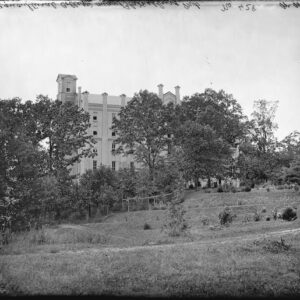Tag: Bladensburg MD
Wikipedia says: Bladensburg is a town in Prince George’s County, Maryland. Bladensburg is 8.6 miles (13.8 km) from central Washington.
Originally called Garrison’s Landing, Bladensburg was renamed in honor of Thomas Bladen, governor of Maryland, 1742–1747. Bladensburg was established in 1742 as a regional commercial center by an act of the Maryland General Assembly. The act also authorized the town commissioners to purchase 60 acres (240,000 m2) of land to be laid out in 1-acre (4,000 m2) lots. The act required that a house covering at least 400 square feet (37 m2) of ground with a brick or stone chimney be constructed within 18 months of the sale of the lot. As of 6 June 1746, only 18 of the lots had been improved according to the stipulations of the act. Christopher Lowndes’ house, Bostwick, and those built by David Ross and William Hilleary (the William Hilleary House) were among them.
With the establishment in 1747 of a government tobacco inspection system, Bladensburg became a designated tobacco inspection and grading port. The Market Master’s House is evidence of that role. The town was a seaport during the colonial period.
Bladensburg is best remembered for the Battle of Bladensburg (1814) during the War of 1812, the only battle in US history in which a sitting president (James Madison) rode into battle. US defeat in that battle, called “the greatest disgrace ever dealt to American arms”, cleared the way for the burning of Washington by British troops.
Its role as a seaport faded as the Anacostia River silted up and larger ships could no longer reach the port. However, the town remained an important crossroads of routes north to Baltimore and Philadelphia, south and east to the towns of Annapolis and Upper Marlboro, and west to the District of Columbia. The original terminus of the Baltimore and Ohio Railroad was Bladensburg, forcing all passengers intended for Washington to board carriages to continue on into the city. A sharp decline of passengers was experienced in Bladensburg when an extension of the B&O was permitted into the District of Columbia in 1835.
Bladensburg remained a small town throughout the rest of the 19th century with modest development and infrastructure improvements. A major attraction in Bladensburg from the 18th century through the 20th century was the Spa Springs. Thought to be a cure for various illnesses, the springs attracted visitors from throughout the region and was reachable by the Washington, Spa Spring and Gretta Railroad. Another attraction was the Bladensburg Dueling Grounds or Dueling Creek, the site of many famous duels until after the American Civil War.
The town was incorporated in 1854. Schools and churches were constructed, including the first Freedmen’s Bureau school for African Americans in 1866.
Showing the single result
